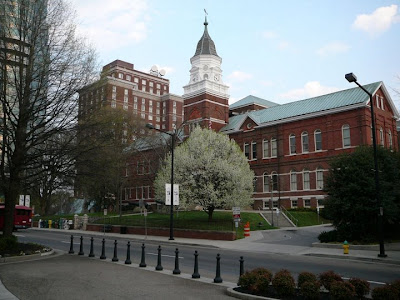Reuben Gibson
Reuben Gibson
Search the database
© History Chasers
Click here to view all recent Historical Melungeons Blog posts

The purpose of the Knox County Archives is to receive, process, and preserve the non-current, permanent records created by the Knox County, Tennessee government from 1792 to the present. The Knox County Archives provides information on the origins and history of the court systems, court records, genealogy, and history of Knox County, Tennessee. The Archives provides public access to all holdings, with the exception of juvenile records and those restricted by Tennessee laws. It provides local government source material to court officials, genealogists, legal professionals, historians, and the general public.
A long list of records available follows here:
Knox County was created on June 11, 1792 by Governor William Blount from parts of Greene and Hawkins counties, and has the distinction of being one of only eight counties created during territorial administration. It is one of nine United States counties named for Revolutionary War general and first United States Secretary of War Henry Knox. Parts of Knox County later became Blount (1795), Anderson (1801), Roane (1801), and Union (1850) counties.
In 1786 James White built a fort five miles below the junction of the French Broad and Holston Rivers on the southernmost edge of frontier settlement in present-day East Tennessee. William Blount, governor of the Territory of the United States South of the River Ohio, selected the site of James White's Fort as the territorial capital in 1791. He gave it the name Knoxville in honor of his direct superior as territorial governor, Revolutionary War hero General Henry Knox (1750-1806), who served as the first U.S. Secretary of War from 1785 to 1794.
Governor Blount designated Knoxville as the capital of the Territory South of the River Ohio from 1791 to 1796. Knoxville also served as the capital of the State of Tennessee from 1796 to 1812, with the exception of one day in 1807, when the legislature met in Kingston to fulfill a treaty obligation with the Cherokee, and briefly again in 1817-18. Frontier leader General John Sevier, a resident of Knox County, served as governor of Tennessee from 1796 to 1801 and 1803 to 1809, most of Knoxville's years as the state capital. Since no state capitol building was constructed until 1845, when work began on the capitol building in Nashville, the general assembly met in taverns and public buildings. The William Blount Mansion (1792), the home of Territorial Governor Blount, is the most historically significant dwelling surviving in Knox County from the pre-statehood era. It is the only National Historic Landmark in the county.
Wikipedia
http://en.wikipedia.org/wiki/Knox_County,_TennesseeSince late 2007, several “direct-to-consumer” or “DTC” genetic testing products have entered the marketplace, many of which offered some degree of autosomal ancestry analysis (including 23andMe, deCODEme, and Pathway Genomics, among others).
In early 2010, genetic ancestry testing company Family Tree DNA announced that it would begin offering a new genetic genealogy product (see “Announcing Family Finder – An Autosomal Test From Family Tree DNA”). The new product, called “Family Finder,” is one of only a very few autosomal genetic genealogy tests available to consumers.
Continued here:
I’m trying to choose whether or not I want to take a direct-to-consumer genetic scan of hundreds of thousands of variants in my genome. Before we get started with the big questions, here are some basic queries that many consumers may have, as well as some information about myself and this project.
So how will this work, anyway?
I'm currently in possession of a direct-to-consumer genetic test—I just haven't decided if I'll use it. For three days this week, I'll pose a question a day to a variety of sources about the value of these tests. I'll post their answers on this site, along with my reaction. I'll also be soliciting opinions from commenters and people following me on Twitter. On Friday, Aug. 6, I'll evaluate everything I've learned and reveal whether I've decided to take the test.